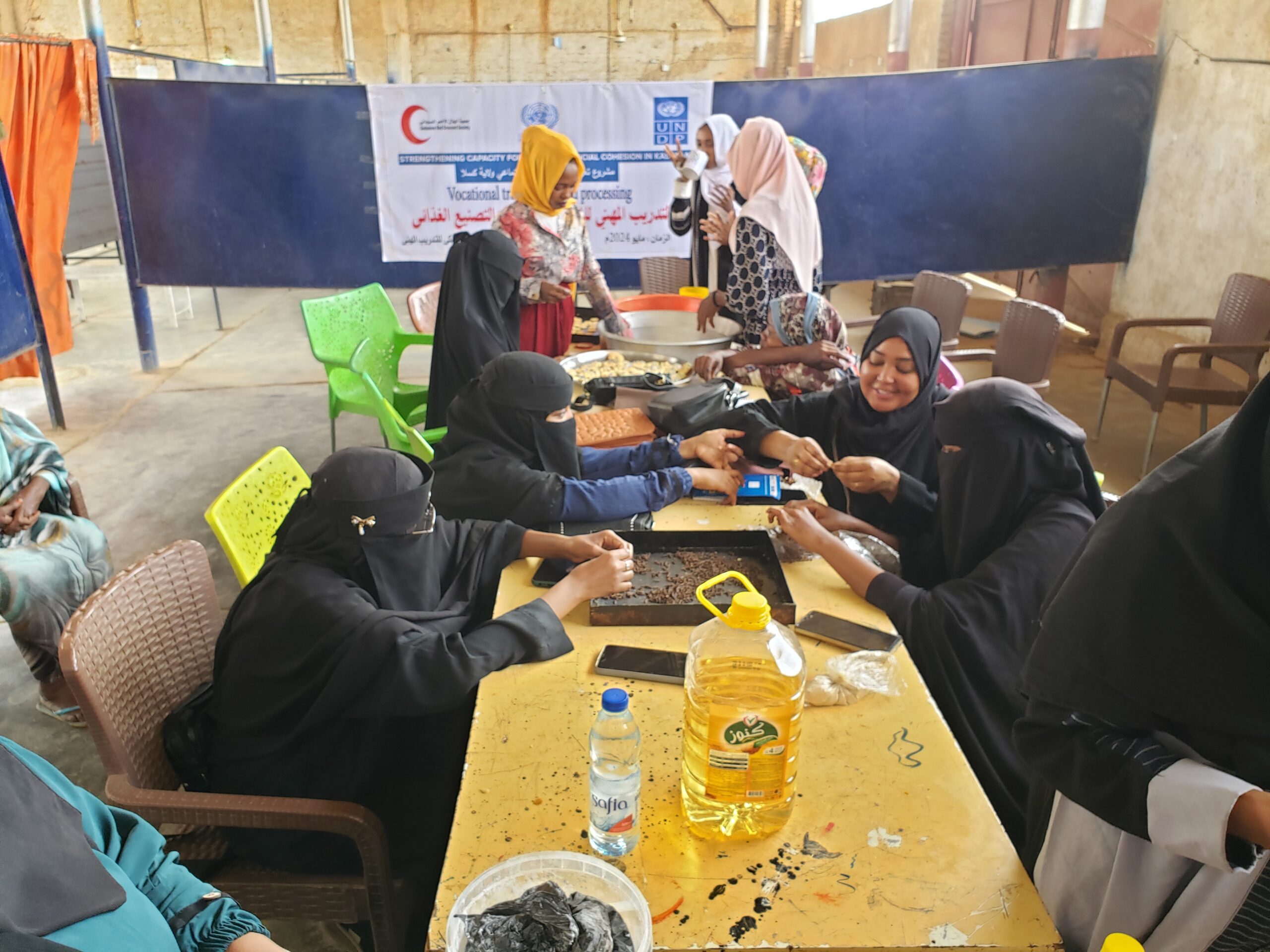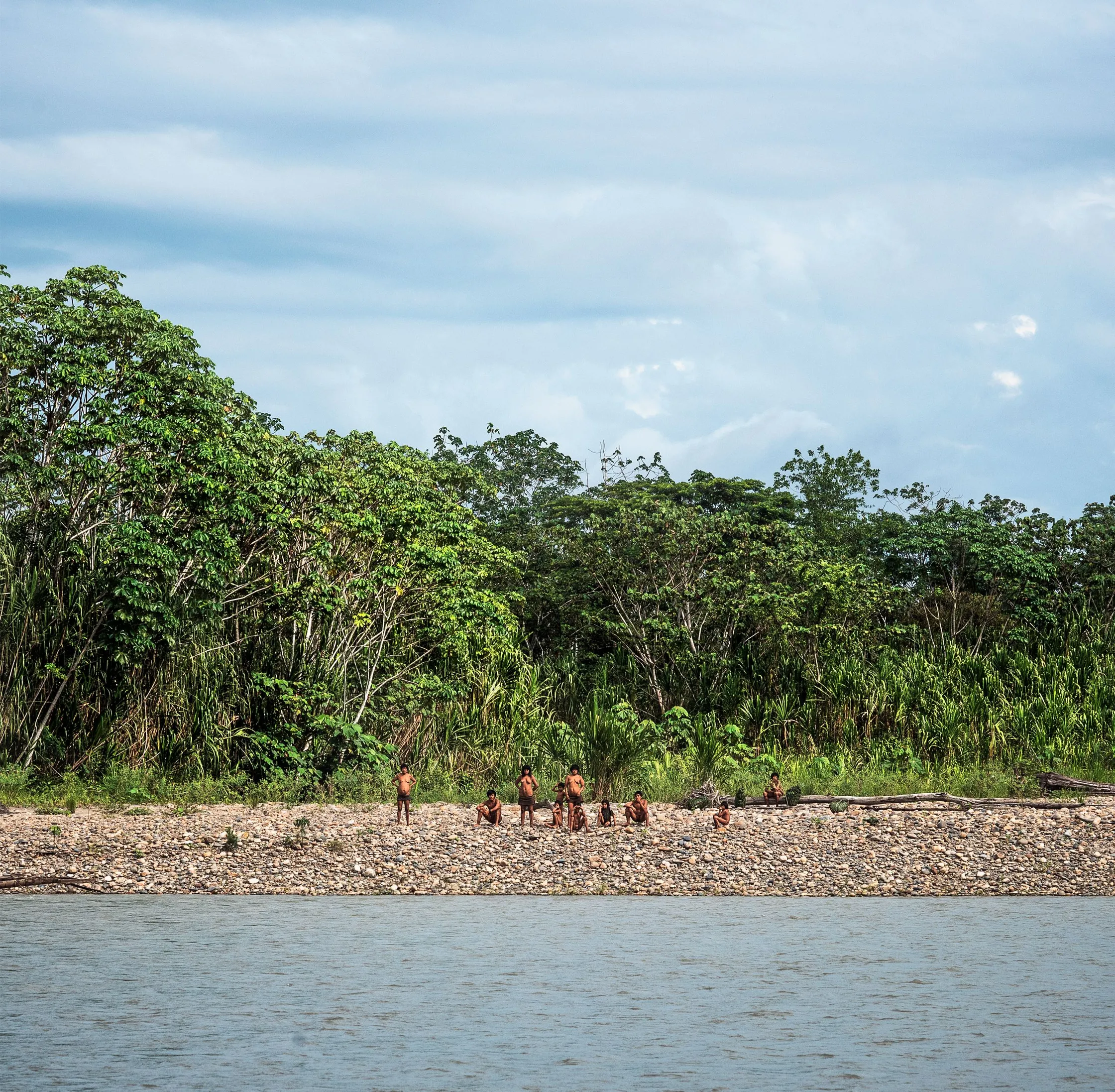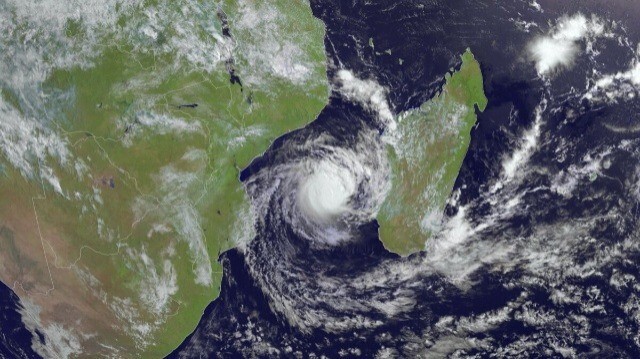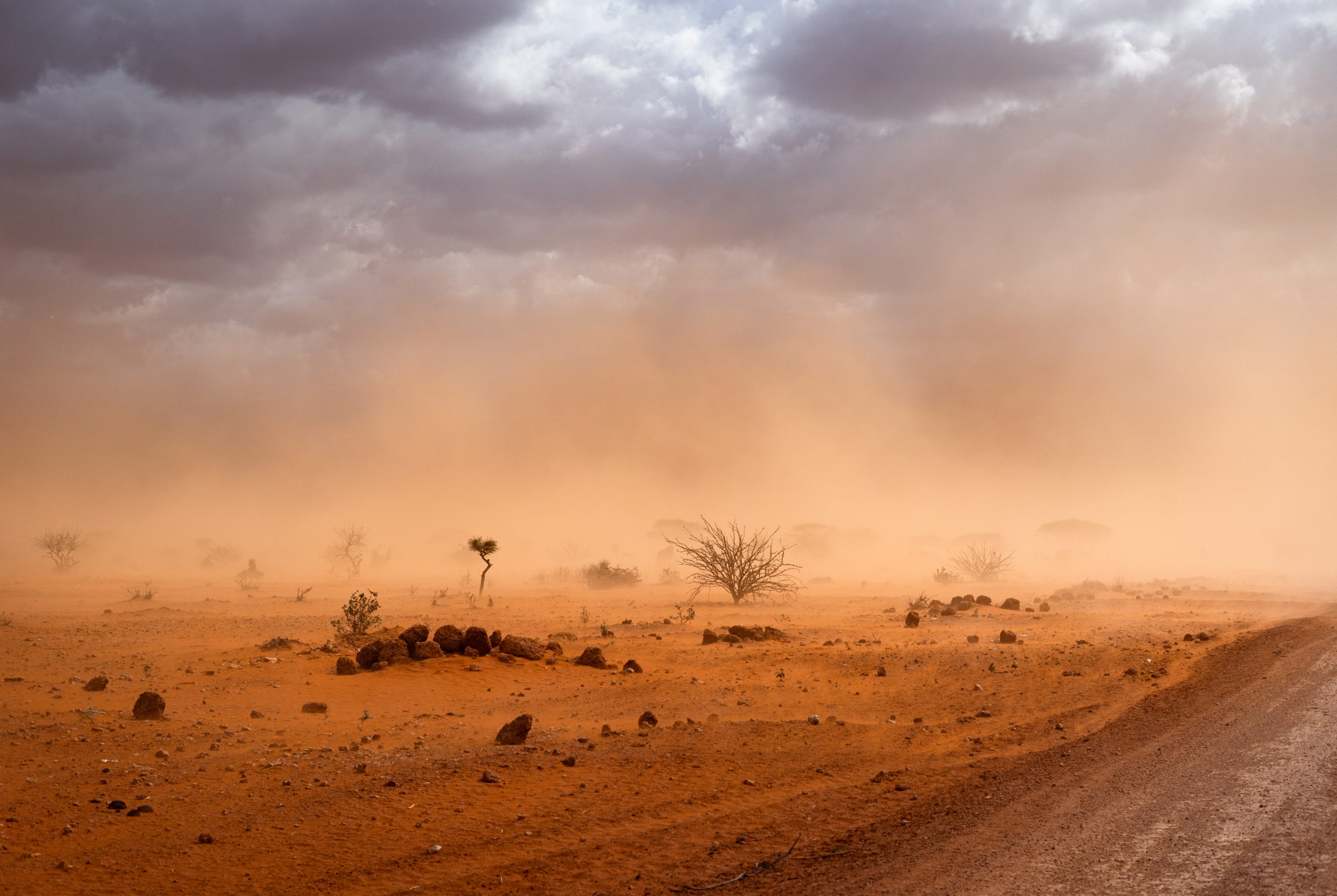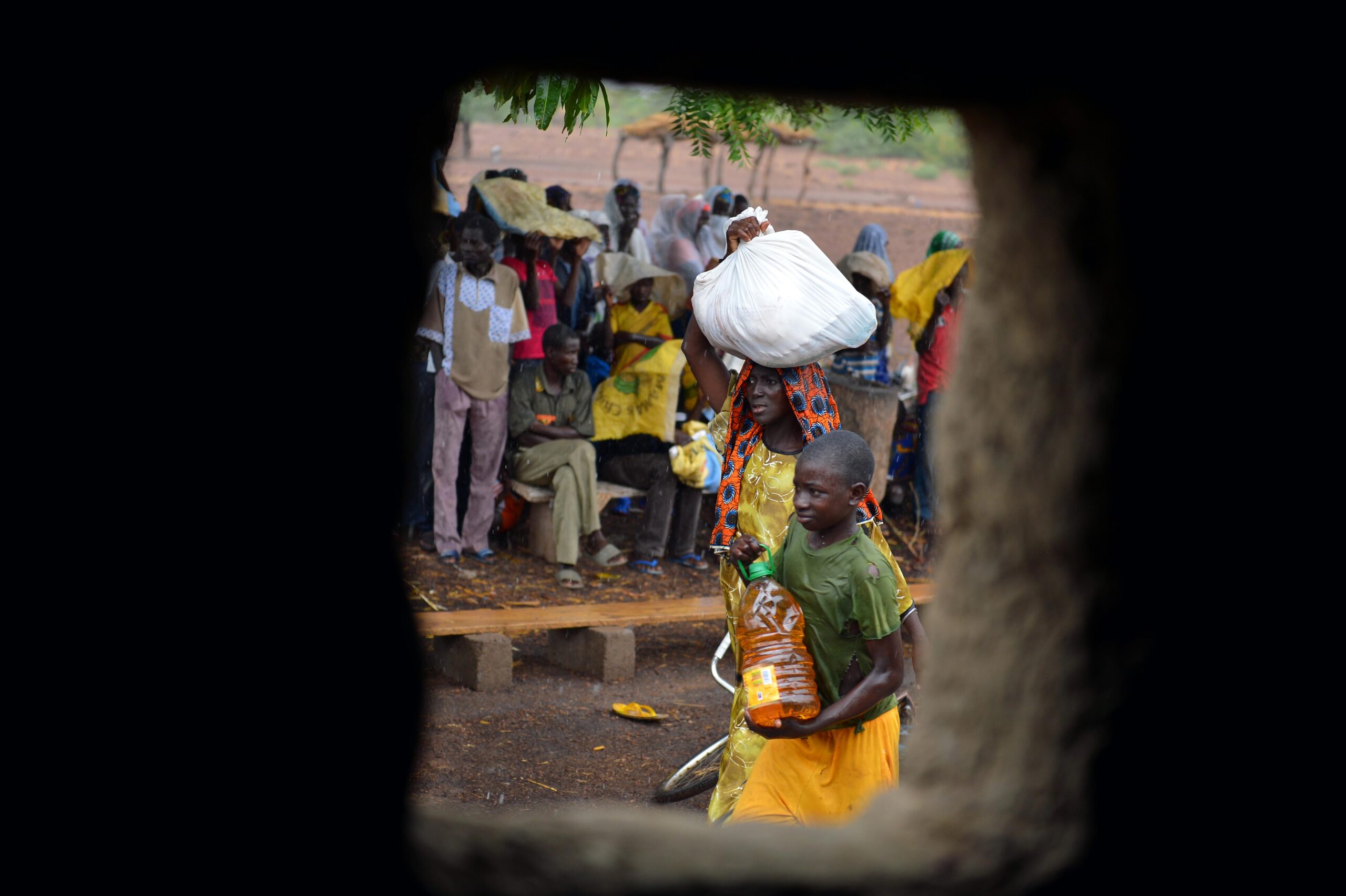Adapting pastoral farming to a warming climatex
Farmers in Kenya are increasingly turning to camels as a drought-resistant alternative to the cattle they have traditionally raised. In rural Kenya, it’s common to see pastoral farmers with their cattle. For communities like the Borana and Samburu in the northern region, cattle are not just livestock but a symbol of social status, vital for cultural rituals, weddings, and providing milk and meat. However, climate change is disrupting this traditional way of life. In Lekiji village, 252 kilometers from the capital, Abdullahi Mohamud, a 65-year-old camel herder and father of 15, lost nearly all his 30 cattle during the 2022 drought. “I had 30 cattle before the drought, but only one survived,” he recounts. Devastated by the loss, Mohamud invested his savings in 20 camels, believing they offer a more reliable option. The 2022 drought, exacerbated by climate change, killed around 2.6 million cattle. Camels, however, are more resilient and better adapted to harsh conditions. “Cattle are hard to rear due to poor pasture, whereas camels thrive on shrubs and can survive in tougher conditions. When the pasture dries up, cattle perish,” Mohamud explains. The National Disaster Management Authority (NDMA) reported that the drought caused losses of approximately 2.6 million cattle, with damages estimated at 226 billion Kenya Shillings (about 1.75 billion USD). The growing population has intensified competition for grazing and water resources. A small camel costs around $600 USD, while a cow is about $150 USD. The Kenya Agricultural Livestock Research Organization (KALRO) notes that over 70 percent of Kenya’s land is rangeland. Despite camels comprising only six percent of Kenya’s herbivore population (about 960,000), they provide significant advantages over cattle. The Somali community in Northern Kenya pioneered camel herding, a practice later adopted by other tribes such as the Samburu, Turkana, Pokot, and Maasai. Integrating camels into traditional herding practices helps pastoralists manage the effects of climate change and maintain food security. Nearby, 26-year-old Musalia Piti now tends to his father’s 60 camels after losing 50 cows to drought. The family has invested in camels, which they can sell for cultural ceremonies when needed. Camels require less water and can graze on a wider variety of plants. Their long bodies reduce sun exposure, aiding in heat stress management. The shift from cattle to camels marks a significant adaptation to climate threats and aims to improve long-term climate resilience. This transition also impacts cultural traditions, especially for the Samburu, where cattle symbolize status and are used as dowry in marriages. Elder Lesian Ole Sempere, 59, stresses the importance of cattle in wedding ceremonies, despite the decreasing herd sizes. Raising camels involves a learning curve and may not immediately match the cultural significance of cattle, but the Samburu remain committed to their traditions, adapting to new realities while preserving their cultural identity. Calvince Okoth, a Veterinarian at Mpala Research Centre, highlights that recent droughts have reduced available pastures. Rotational grazing, involving designated paddocks during the dry season, is a viable strategy, though communal land ownership and encroachment complicate management. Climate change is causing unpredictable weather in the Horn of Africa, prompting farmers to explore new agricultural methods, including fish farming. Camels offer a promising alternative that may help preserve traditional pastoralist lifestyles in the 21st century. Whether these communities will fully embrace camels remains to be seen.
Western hunts endanger Africa’s 23,000 captive lions
Captive lions taken from their wild habitats in Africa and raised in captivity, are being slaughtered for the pleasure of tourists, particularly from Western countries, with the US a major contributor. Lion Day is celebrated Aug. 10. Thousands of captive lions, who spend their lives entertaining tourists behind steel bars, are kept ready for the day when they will be killed under the guise of hunting events. Wild lions, who have lost the majority of their population and habitats due to human activity in the last century, are struggling to survive in the vanishing savannas of Africa. – Lion population has fallen by 43% since 2001 There were about 200,000 lions in the wild at the beginning of last century, according to estimates by the Oxford University Wildlife Conservation Research Unit. By the end of the last century, the population, which had dwindled to around 33,000 due to hunting and other human factors, had decreased by 43% since 2001. Today, it is estimated that 23,000 lions remain in the wild. Having lost nearly 95% of their historical natural habitats, lions today primarily live in well-protected national parks in Tanzania, South Africa, Botswana, Namibia, Zambia and Zimbabwe. – Captive lions Research includes only lions living in the wild in global lion population estimates. Captive lions, which are removed from their natural habitats and live in captivity, are excluded from the list. The term captive lions refers to lions born and raised on special farms for commercial purposes. Those lions lack hunting skills and do not adapt to the wild due to their fearlessness of humans. – Lion tourism South Africa, which hosts one of the largest lion populations in the world, has about 3,500. It is also one of the leading countries with the largest captive lion population. According to a 2024 report by the World Animal Protection Society, there are approximately 8,000 captive lions in 366 farms in the country. The captive lion industry, which generates more than $40 million annually for the South African economy, is a significant part of the tourism sector. Lions kept in private nature reserves and farms across the country are displayed to tourists visiting the area for safaris, for a fee. Tourists who visit the facilities, where entrance fees typically range from $10 to $15, can pay an additional fee to pet and take photos with lions separated from their families. One of the most popular activities among tourists is watching captive lions being fed by caretakers. – Lion hunting Captive lions, who spend their lives entertaining tourists behind steel bars and cages, are often killed for sport by tourists from Western countries when they grow old. South Africa, where captive lion hunting is legal with a special permit, is one of the leading centers for lion hunting worldwide. According to a 2022 report by Humane Society International, approximately 4,000 captive lions were hunted by foreigners in South Africa between 2014 and 2018. The report revealed that more than half of the lions were hunted by American tourists, followed by Spaniards, Russians, Danes, Canadians and Germans. According to information obtained by Anadolu reporters from South African tourism agencies, the cost of hunting parties ranges from $4,000 to $60,000 in 2024, depending on the type of hunt and tour. The tours are conducted as safari tours lasting seven to 10 days on farms covering thousands of acres, mostly in the North West and Limpopo provinces. Hunts, where lions are killed with rifles from a safe distance in more confined areas, are referred to as “canned hunts.” Hunters can take photos with the lions they kill and bring the skulls home as trophies.
Microsoft, Palantir forge AI partnership for US defense
Microsoft and Palantir Technologies announced a major partnership Thursday, combining their advanced cloud and artificial intelligence (AI) capabilities to deliver enhanced solutions for the US defense and intelligence sectors. The collaboration will integrate software and data integration firm Palantir’s software with Microsoft’s cloud services and Azure OpenAI Service, according to Microsoft’s statement on its website. This will enable the deployment of Palantir’s products within Microsoft’s Azure Government and classified cloud environments, specifically designed for sensitive national security operations. Azure Government is a service that provides a dedicated cloud enabling government agencies and their partners to transform mission-critical workloads to the cloud. Utilizing Microsoft’s cloud compute and powerful language models such as GPT-4, the partnership aims to operationalize AI-driven solutions for critical missions, providing tools for data integration, visualization and actionable insights. The goal is to enhance the operational capabilities of the defense and intelligence communities through advanced analytics and AI-powered applications. “This collaboration represents a step change in how we support our defense and intelligence communities,” said Shyam Sankar, Palantir’s chief technology officer. In addition to the technology integration, Palantir and Microsoft plan to offer training sessions and bootcamp experiences to help government personnel effectively utilize the new capabilities. The market reacted positively to the news, with Palantir’s stock rising as much as 11% to $29.23 per share before paring gains to around 9% by the end of the trading session, according to Business Insider.
Global wind energy plans fall short of reaching the 2030 target
Countries aim to increase global wind energy capacity 2.4-fold by 2030, but national plans fall short of the UN’s COP28 commitment to triple global renewable energy capacity. London-based think tank Ember analyzed the 2030 wind energy targets of 70 countries and the EU, which account for 99% of the current installed wind capacity, to see if they align with the COP28 goal. The report found that while national targets would double global wind capacity by 2030, they are insufficient to meet the COP28 pledge. Current targets would expand wind energy capacity from 901 gigawatts at the end of 2022 to 2,157 gigawatts by 2030. Achieving the tripling goal requires an additional 585 gigawatts worldwide. Most of the expected increase will come from China, which is projected to triple its wind capacity by 2030 and account for over half of the global increase in wind capacity from 2024 to 2030. However, the U.S. and India face significant gaps between their current targets and the needed increase. Not all countries are falling short. Brazil needs to build 0.3 gigawatts of new wind capacity annually from 2024 to 2030 to meet its 2030 targets. Last year, Brazil set a record by adding 5.3 gigawatts of wind capacity, and the IEA predicts it will add an average of 2.4 gigawatts annually until 2030. Turkey has nearly achieved its goal of generating 12% of its electricity from wind by 2030 and has the potential to set higher targets. Ember Electric Analyst Katye Altieri noted, “Governments are not ambitious or proactive enough, especially in onshore wind capacity. Despite its role in providing cheap electricity and complementing solar energy, wind energy isn’t receiving adequate attention.” Ben Backwell, CEO of the Global Wind Energy Council (GWEC), emphasized that wind energy must be central to the clean energy transition. “Every gigawatt installed is a step towards a greener world. Targets play a crucial role in guiding our direction, but only real actions that meet these targets can effectively address climate change, drive clean industry, and ensure secure energy,” he said.
Yahya Sinwar: From Israeli prisons to leading Hamas
The Palestinian resistance group Hamas appointed Yahya Sinwar as its new political bureau chief on Tuesday. Sinwar succeeds Ismail Haniyeh, who was assassinated in the Iranian capital Tehran after he attended the swearing-in ceremony of Iran’s new president on July 31, the group said in a statement on its Telegram channel. Hamas and Iran have accused Israel of assassinating Haniyeh, but Tel Aviv has not denied or confirmed its responsibility. The selection of Sinwar, 61, reflects his history with Hamas. He has served as the resistance group’s top official in Gaza for two consecutive terms, the first starting in 2017 and the second in 2021. Commenting on the significance of Sinwar’s selection as the head of the political bureau, the group’s executive body, Palestinian writer and political analyst Ibrahim Al-Madhoun told Anadolu “there is no doubt that choosing Sinwar for this position is a challenge to the Israeli occupation and indicates that the man remains effective, strong and in control of the field” in Gaza despite the ongoing Israeli war for nearly 10 months. “Sinwar’s appointment was natural internally, as he was effectively Haniyeh’s deputy, being the head of Hamas in Gaza,” he added. Al-Madhoun said it is expected that Sinwar will soon issue a statement, possibly in writing, announcing his appointment as the head of Hamas’s political bureau. Yahya Ibrahim Hassan Sinwar was born in 1962 in the Khan Younis refugee camp in southern Gaza. His family originally hails from the city of al-Majdal in southern Israel, from which they were forcibly displaced in 1948. Sinwar joined the Muslim Brotherhood at a young age and studied at the Islamic University of Gaza, where he earned a bachelor’s degree in Arabic. During his university years, he led the “Islamic Bloc,” the student wing of the Muslim Brotherhood. In 1985, Sinwar founded the security apparatus for the Muslim Brotherhood, known then as “Al-Majd.” This organization focused on resisting the Israeli occupation in Gaza and combating Palestinian collaborators. Sinwar’s student activism helped him gain the experience that later enabled him to take on leadership roles in Hamas after its founding in 1987. In 1982, the Israeli army first arrested Sinwar and released him after a few days, only to arrest him again later that year, sentencing him to six months in prison for “participating in security activities against Israel.” On Jan. 20, 1988, Israel rearrested him and sentenced him to four life terms plus 30 years for “founding the Al-Majd security apparatus and participating in the establishment of Hamas’s first military wing, known as the Palestinian Mujahideen.” Sinwar spent 23 years in Israeli prisons before being released as part of a prisoner exchange deal between Hamas and Israel in 2011 known as the “Shalit Deal.” Under the deal executed on Oct. 11, 2011, Israel released 1,027 Palestinian detainees in exchange for the release of Israeli soldier Gilad Shalit by Hamas. After his release in 2011, Sinwar participated in Hamas’ internal elections in 2012, winning a seat on the political bureau and taking responsibility for supervising the group’s military wing, the Al-Qassam Brigades. In September 2015, the US added Sinwar to its list of “international terrorists.” Israeli security services have also listed Sinwar as a top target for assassination in Gaza, according to Israeli media. Israel, flouting a UN Security Council resolution demanding an immediate cease-fire, has faced international condemnation amid its continued brutal offensive on Gaza since an attack last October by the Palestinian resistance group Hamas. More than 39,600 Palestinians have since been killed, mostly women and children, and over 91,600 injured, according to local health authorities. Almost 10 months into the Israeli war, vast tracts of Gaza lie in ruins amid a crippling blockade of food, clean water and medicine. Israel stands accused of genocide at the International Court of Justice, which ordered it to immediately halt its military operation in Rafah, where more than 1 million Palestinians had sought refuge from the war before it was invaded on May 6.
Mali: Nearly 50 Wagner fighters killed in ambush
Over the weekend in northern Mali, dozens of Wagner mercenaries were killed by jihadis and rebels in what has been described as the most significant blow to the Russian group in years. At least two Wagner fighters were captured. Around 50 Wagner personnel were killed in an al-Qaida ambush that also involved pursuing rebels near the Algeria border, according to Wassim Nasr, a Sahel specialist at the Soufan Center. Nasr, who reviewed footage of the aftermath, reported that the convoy, which was retreating from a battle with Tuareg rebels and Mali’s army, was attacked south of Tinzaouaten. Wagner confirmed in a Telegram statement that some of its fighters and Malian troops were killed in the clash with hundreds of militants, though they did not specify the number of casualties. Mali’s army reported two soldiers dead and 20 rebels killed. Al-Qaida claimed responsibility for the attack, stating that it was a retaliation for past massacres in Mali, and claimed 50 Wagner fighters were killed. Tuareg rebels reported that some mercenaries and Malian soldiers had surrendered to them. The Associated Press could not immediately verify the video mentioned by Nasr. Nasr described the incident as unprecedented in Africa and likely to shift dynamics in the region. He noted that Wagner’s previous claims of success are contradicted by their limited capacity to sustain such operations or secure territory. Wagner has been active in Mali since late 2021, following a military coup, replacing French troops and international peacekeepers. Their presence, aimed at countering militants and securing mineral resources, has also been marked by allegations of civilian casualties. Independent analyst John Lechner suggested that the ambush reflects Wagner’s overstretched and overconfident stance in Mali. He noted that Wagner’s setbacks are often attributed to private military companies, while Russian defense victories are emphasized.
Life on earth might have started earlier
Life on Earth may have started 1.5 billion years earlier than previously thought, according to new evidence discovered by a group of scientists. According to a report by the BBC, researchers working in Franceville, Gabon have discovered evidence in rocks that indicate the environmental conditions for possible life forms existing 2.1 billion years ago. But scientists noted that the findings of these potential life forms were limited to an inland sea, did not spread globally, and eventually died out. This theory challenges the prevailing view among scientists, who generally estimate that animal life began around 635 million years ago. The new research contributes to an ongoing debate over whether so-far unexplained formations found in Franceville, Gabon are actually fossils or not. The scientists examined the rock around the formations for evidence of nutrients such as oxygen and phosphorus that could have sustained life. Prof. Ernest Chi Fru from Cardiff University was involved in the research team and told BBC News that if the theory is accurate, these life forms would be similar to slime mold, a brainless single-cell organism that reproduces with spores. However, not all scientists are convinced. University College London Professor Graham Shields, who was not involved in the study, is a sceptic of the theory. “I’m not against the idea that there were higher nutrient levels 2.1 billion years ago, but I’m not convinced this would have led to complex life,” he said, calling for more evidence to support the claim. Chi Fru argued that his research provides insight into the processes that create life on Earth. “We’re saying, look, there’s fossils here, there’s oxygen. It’s stimulated the appearance of the first complex living organisms,” Fru said. “We see the same process as in the Cambrian period 635 million years ago. It helps back that up. It helps us understand ultimately where we have all come from.” The initial hint of earlier complex life emerged a decade ago with the discovery of the Francevillian formation. Prof. Fru and his colleagues said the formation contained fossils indicating evidence of life capable of self-movement and wiggling. But the findings were not accepted by all scientists. To further their investigation, Chi Fru and his team analyzed sediment cores from the rock in Gabon, revealing that the chemistry of the rock is indicative of a “laboratory” for life formed just before the formation appeared. Scientists believe that high levels of oxygen and phosphorus resulted from volcanic activity triggered by the collision of continental plates underwater, which created a nutrient-rich shallow inland sea. Chi Fru also said that this protected environment created ideal conditions for photosynthesis, resulting in significant oxygen levels in the water. “This would have provided sufficient energy to promote increases in body size and greater complex behavior observed in primitive, simple animal-like life forms such as those found in the fossils from this period.” Fru also noted that the isolated environment also led to the demise of the life forms due to a lack of new nutrients to sustain the food supply.
Activists urge action to address global food crisis
Activists and chefs worldwide joined a new campaign on Thursday (July 25) to spotlight the global food crisis. In Rio de Janeiro, Brazil, where G20 leaders were meeting for a two-day summit, campaigners staged a demonstration. Members of various NGOs distributed empty plates from a mock food truck. The CEO of Sustainable Development Goal 2 Advocacy explained the symbolism behind the empty plates: “We use these plates to represent the 733 million people worldwide who face hunger. We need urgent action and commitment to drive change, building on Brazil’s and the G20’s promises to create an alliance for this cause.” The protest came after Brazil committed to partially funding the global alliance against hunger and poverty.
Sudan’s Kassala women trained in bakery skills to promote peace
This initiative is part of a larger effort to strengthen peacebuilding systems in Sudan.
UN: 733 million people globally faced hunger in 2023
Around 733 million people faced hunger in 2023, according to the latest State of Food Security and Nutrition in the World (SOFI) report published on Wednesday by five United Nations specialised agencies. Hunger affected one out of every eleven people in the world and one out of five in Africa, with the number rising on that continent. The report highlights that access to adequate food remains elusive for billions with around 2.33 billion people globally faced moderate or severe food insecurity in 2023. It add that this number that has not changed significantly since the sharp upturn in 2020, amid the Covid-19 pandemic. David Laborde, the Food and Agriculture Organization’s director of agri-food economics, says solving the problem is a political choice, and also depends on “how much money we are ready to put on the table”. “Today we produce enough food on this planet to feed everyone. So if we want to solve the position by 2030, it’s technically feasible,” he says. While there has been some progress in specific areas, hunger in places like Sudan and the Gaza Strip has been dramatically worsened by ongoing conflicts. And the report predicts that if current trends continue, about 582 million people will be “chronically undernourished by 2030″, half of them in Africa. Laborde said chronic hunger was a crisis impacting people not only right now, because its impact would still be felt in the future. “Pregnant women, kids that face malnutrition problem today, will pay the price all of their life. So by not solving the problem today, we are basically impoverishing these countries in the future,” he says. The report says food insecurity and malnutrition are worsening due to a combination of factors, including persisting food price inflation that continues to erode economic gains for many people in many countries. And major drivers like conflict, climate change, and economic downturns are becoming more frequent and severe. These issues, along with underlying factors such as unaffordable healthy diets, unhealthy food environments and persistent inequality, are now coinciding simultaneously, amplifying their individual effects. Achieving the Sustainable Development Goal of Zero Hunger, it says, requires a multi-faceted approach and targeted interventions. This includes transforming and strengthening agrifood systems, addressing inequalities, and ensuring affordable and accessible healthy diets for all. The UN agencies are calling for increased and more cost-effective financing, with a clear and standardised definition of financing for food security and nutrition.
UN says nearly 40 million people had HIV in 2023
In a new report launched by the UN on Monday, it was revealed that nearly 40 million people were living with HIV/AIDS last year, with over 9 million not receiving any treatment. The report highlighted that someone died of AIDS-related causes every minute, underscoring the ongoing global impact of the disease. While progress has been made in combating the AIDS pandemic, the report noted a slowdown in advancements, accompanied by shrinking funding and rising new infections in specific regions: the Middle East and North Africa, Eastern Europe and Central Asia, and Latin America. In 2023, approximately 630,000 people died from AIDS-related illnesses, marking a significant decrease from 2.1 million deaths in 2004. However, this figure still exceeds the 2025 target of fewer than 250,000 deaths set by UNAIDS. Gender inequality was identified as a critical factor exacerbating risks for girls and women, particularly in parts of Africa where HIV incidence among adolescents and young women remains disproportionately high. The report also highlighted an increasing proportion of new infections among marginalized communities facing stigma and discrimination, such as sex workers, men who have sex with men, and people who inject drugs. This proportion rose to 55% in 2023 from 45% in 2010. UNAIDS Executive Director Winnie Byanyima emphasized the importance of upholding commitments made by world leaders to end the AIDS pandemic as a public health threat by 2030. She stressed the need for adequate resources for the HIV response and protection of human rights for all individuals. Despite progress in HIV treatments, including the development of long-acting injections, affordability remains a significant barrier. These injections, costing $40,000 annually for two doses, are inaccessible to all but the wealthiest individuals with HIV. UNAIDS has been advocating for reduced costs to make these treatments available in low and middle-income countries. Moreover, the report mentioned promising cases where individuals treated for leukemia showed no detectable HIV virus afterward, a development to be discussed at the 25th International AIDS Conference in Munich. Looking ahead, UNAIDS continues to advocate for the development of an AIDS vaccine as part of its efforts to prevent the spread of HIV globally.
Drought cripples Morocco’s agriculture, threatens food supply
Morocco’s six-year drought has devastated wheat production, impacting farmers, economy, and food security.
Nigerian doctor draws massive ‘unity in diversity’ artwork
Combining his passions for art and his homeland, Nigerian doctor Fola David is vying for a Guinness World Record.
Legendary kora player Toumani Diabate dies in Bamako at age 58
Malian kora legend Toumani Diabate passed away at the age of 58 after a short illness, leaving behind a profound musical legacy that resonated across the world.
In Peru’s Amazon forests, an uncontacted tribe has been spotted
With over 750 estimated members, the Mashco-Piro tribe resides deep in the forests of southeastern Peru, believed to be the largest isolated tribe in the world.
Charlize Theron Raises Over $1 Million at Africa Outreach Block Party
Charlize Theron hosted her annual Block Party in Los Angeles, raising over $1 million for her charity
UN report: World population to peak in mid-2080s
The latest UN report predicts that the world’s population will reach its peak in the mid-2080s, growing from 8.2 billion in 2024 to around 10.3 billion by the mid-2080s
Nextflix documentary tells all about the first Black Barbie
A new Netflix documentary follows the history of how the first Black Barbie doll came to be. The film features interviews with the original designer of the doll.
African doctors ponder exit as far-right rises in France
North African doctors in France, including Tasnime Labiedh, are rethinking their future amid the far-right National Rally’s rise and a perceived lack of respect and fair working conditions.
Tanzania’s Gombe chimpanzee colony faces extinction
Once thriving, the chimpanzee colony in Gombe National Park, Tanzania, faces extinction due to habitat loss.
UN rights chief warns of rising hate speech, discrimination
As a record number of countries hold elections this year, the United Nations human rights chief on Wednesday warned against rising hatred and discrimination. While refusing to comment on specific election campaigns playing out, Volker Türk called on voters to keep the rights of others in mind when they cast their ballots. He made the appeal as major elections take place in France and Britain this week, and in the United States and Germany later this year. Türk said he was concerned when listening to the rhetoric surrounding recent votes, including last month’s European parliament elections which handed significant gains to far-right parties. He said immigrants, refugees, and other foreigners have been used as “scapegoats” for some political parties. “I’m always worried when I hear narratives that denigrate the other, that dehumanize the other, that makes scapegoats of migrants, of refugees, of asylum seekers, of minority groups,” Türk said. He blasted the “politics of distraction” and said political leaders needed to stand up against the discourse of hate. “History tells us, in particular in Europe, that the vilification of the other, that the denigration of the other is a harbinger for worse to come.” Türk said this was “an alarm bell that we need to ring”, particularly in 2024 which is a “mega-year for elections”. He noted the United States, India, Europe, and other countries have experienced electoral seasons “that often lead to a speech of hatred and dehumanization of the other”. The UN human rights chief called on political leaders to stand up against discrimination saying there must be “zero tolerance” for hate speech.
Chad Rangers protect elephants despite limited resources
Rangers in Chad’s Zah Soo National Park successfully protect elephants despite limited resources, while facing challenges in balancing wildlife conservation with local needs.
WMO declares tropical Cyclone Freddy longest-lasting on record
The World Meteorological Organization (WMO) on Tuesday declared Tropical Cyclone Freddy the longest tropical cyclone on record, at 36 days.
Panama Papers scandal results in acquittal of 28 defendants
Eight years after the leak of 11 million secret financial documents, a court in Panama acquitted over two dozen defendants on Friday.
5 billion affected by extreme heat due to climate change
Nearly 5 billion people suffered from extreme heat due to climate change from June 16 to June 24, according to Climate Central.
UN: 2023 Worst Year for Children in Armed Conflict
The United Nations says 2023 marked the highest number of violations against children in nearly a decade.
Amazon’s market value passes $2T as shares hit all-time high
E-commerce and tech major’s stocks up almost 28% since beginning of this year














